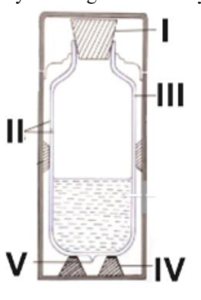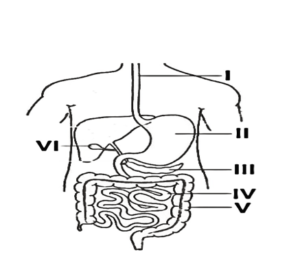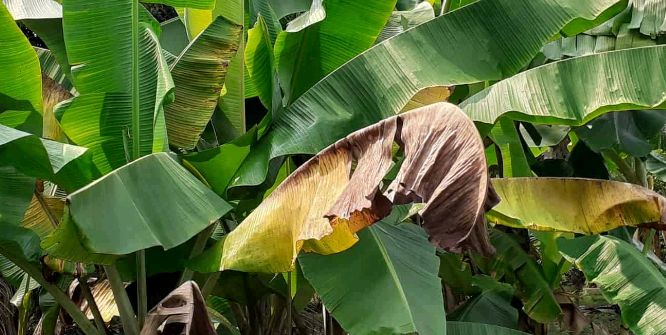INTEGRATED SCIENCE
PAPER 1
OBJECTIVE TEST
Answer all the questions in this section
1. T he process by which a hot saturated solution is cooled to obtain some of the solute is called………..
a. Crystallization
b. condensation
c. evaporation
d. distillation
2. Which of these is done based on the difference in boiling points of liquids
a. Filtration
b. Simple distillation
c. Winnowing
d. Decantation
3. The method used to separate an insoluble solid from a liquid is
a. Sublimation
b. Filtration
c. Crystallization
d. Distillation
Use the information below to answer questions 4 and 5
An atom has 11 electrons and its mass number is 23.
4. That is the number of protons in the nucleus of the atom?
a. 12. b. 11 c. 23 d. 13
5. What is the number of neutrons in the nucleus of the atom?
a. 11. b. 23 c. 34 d. 12
6. What is the unit for tension?
a. Joule b. Watt c. Newton d. Ohm
7. Insects can walk on the surface of stagnant water due to
a. Surface tension
c. Capillarity
c. Density
d. Pressure
8. Which of the following is equivalent to 1Pa?
a. 1N/m2 b. 100N/m2
c. 1N/cm2 d. 1000N/m2
9. The force which restricts movements in fluids is
a. Tensional force
b. Centrifugal force
c. Magnetic force
d. Viscosity
10. The force applied on a rectangular surface with dimension 3m by 2m is 1200N.Calculate the pressure acting on the surface
a. 400Pa. b. 200Pa c. 1400Pa d. 3600Pa
13. Which of the following is not an aquatic habitat
a. trees b. Estuary c. lake d. lagoon
14. In which of the following habitats are you likely to find a tadpole?
a. bush b. deep well
c. Sea shore d. pond
15. Disposal of sewage into a river which supplies water for domestic use may lead to an outbreak of
a. Malaria
b. Guinea worm
c. Cholera
d. River blindness
16. The linear sequence of living things feeding and being fed on is called…
a. Linear feeding
b. Food chain
c. Nutrition
d. Photosynthesis
17. The shedding leaves by plants during the dry season protects them against
a. Heat loss b. Bush fire
c. Plant-eating animals
d. water loss
18. CuO is known as
a. Carbon II oxide
b. cupric oxide
c. Copper oxide
d. copper II oxide
19. Which of these compounds has its name written as only one word
I. NaCl II.NH3 III.CO2 IV.FeCl3
a. IV b .III c. II. d. IV
20. Water bubbles are round because of
a. Surface tension
b. Viscosity
c. Capillarity
d. Gravity
21. Which of the following is not a gas? a. SO2 b. NH3
c. Hg d. F2
22. Atoms of the same element with the same atomic number but different mass number are called
a. Reactive atoms
b. isotopes
c. Allotropes
d. halogens
23. Steel is a mixture of
a. Silicon and iron
b. Iron and carbon
c. ron and nickel
d. Iron and chromium
24. Which of the following is used for making roofing sheets?
a. Aluminum b. Zinc
c. Mercury d. Gold
25. Gold is usually used to make jewelry because it is
a. expensive b. Durable
c. Precious d. Less reactive with air
26. Group VII elements on the periodic table are collectively called
a. Halides b. Semi-metals
c. Halogens d. Noble gases
27. What is the term given to the corrosion of iron nails?
a. corrosion
b. Damage
c. Rusting
d. Ductility
28. A ray of light strikes the surface of a plane mirror at an angle of 27°.What is the angle of reflection?
a. 53° b. 63° c. 27° d. 117°
29. During an eclipse of the sun, the region that has total darkness is known as
a. Umbra b. Shadow
c. Orbit d. Penumbra
30. Shadow formation shows that light rays
a. Travel in a straight line
b. Can be reflected
c. Can be dispersed
d. Can be diffracted
31. One characteristic of an image found in a pinhole camera is that
a. t is virtual
b. It is erect and upright
c. It is magnified
d. It is real
32. Light travels in air at a speed of
a. 3.0×108m/s
b. 3.0×108km/s
c. 30.x108m/s
d. 3000 000 m/s
33. In which part of human beings are the lungs situated?
a. Stomach
b. Pelvic girdle
c. Thorax
d. Abdomen
34. In the lungs of mammals, bronchus branches to form a network of tubes called
a. Trachea
b. Bronchiole
c. alveoli
d. Wind pipes
35. The lateral line in fish is used for
a. Respiration
b. movement
c. feeding
d. Detecting of pressure in water
36. Which term is given to the process by which plants get rid of excess water? a. Transpiration
b. Expiration
c. Respiration
d. Egestion
37. Tissue respiration occurs in one of the following
a. Cytoplasm
b. Mitochondrion
c. Nucleus
d. Vacuole
38. Animals are unable to manufacture their own food because
a. They are lazy
b. They lack chlorophyll
c. They lack cell wall
d. they have no leaves
38. Calculate the force acting on a body of mass 1000g when it is given an acceleration of 10m/s2
a. 10000 N b. 100 N
c.10 N d. 1 N
39. Which force keeps the planets of the solar system in their respective orbits? a. tension
b. Centrifugal force
c. Electrostatic force
d. Centripetal force
40. which of these is the chemical symbol of ammonia
a. NO2 b. NH3
c. H2N d. NH
SECTION B
Answer Only Five Questions from This Section
1a. What is inorganic fertilizer? 1mark
b.i. A bag of cement is pulled along a smooth horizontal floor with a horizontal force of 1000N. If the work done is 100,000J, calculate the distance through which the bag is pulled 2marks.
c. Give two reasons why efficiency of a machine is less than 100% 2marks.
d.i. State three differences between planets and stars 2marks.
Ii.. Name two types of satellites 1mark.
2a. i. Name the four types of teeth in humans 2marks.
ii. What is periodontal disease? 1mark
(b) (i) What is rusting? 1mark
(ii) Why aluminum does not rust but iron dust? 2marks.
(c) (i) What are food nutrients? 1mark
(d) (i) State two effects of malnutrition in farm animals. 2marks.
(ii) Mention one disease of farm animals caused by virus. 1mark.(
3.a (i) What is a vector of a disease 1mark.
(ii) State one method each by which the vectors of the following diseases can be destroyed:
α) river blindness;
β) malaria 2marks.
(b) Write down the systematic names of the following compounds:
(i) CaCO3
(ii) FeS
(iii) NaCl
(iv) NaOH 4marks.
(c) (i) Give the two properties that are common to all states of matter. 1mark.
(ii) In an experiment to determine density, a stone of mass 60 g is put into a bowl containing water. If the level of the water rises from the 60 cm3 mark to 75 cm3, determine the density of the stone. 2marks.
4.a) (i) Define pressure. 1mark.
(ii) Explain why it is important to sharpen a knife before use [2 marks]
(b) (i) State two differences between metals and non-metals 2marks.
(ii) What is an alloy? 1mark.
(iii) Mention the components of each of the following alloys:
(α)steel
(β) brass [2 marks]
(c) Explain how the streamlined body of a bony fish enables it to live successfully in water [2 marks]
5.(a) (i) What is the difference between unicellular organism and multicellular organism 2marks.
(ii) State two reasons why vegetable crops are important to humans [2 marks]
(b) What is the difference between climate and weather? [2marks]
(c) Mention three advantages of staking in crop production [2 marks]
(d) Explain each of the following processes:
(i) Corrosion;
(ii) Sublimation [2 marks].
6.a. briefly describe how you would separate a mixture of common salt and sand 2marks.
bi. State the methods used to separate the following mixtures
.ii Mixture of cooking oil and water
ii. Mixture of ethanol and water
c.i. Mixture of iron filings and Sulphur 3marks.
.ii. Differentiate between marine habitat and terrestrial habitat 2marks
d. Explain the following terms;
i. Population ii. Community iii. Ecosystem 3marks.
SECTION C
PRACTICAL TEST
Answer all questions for 40marks
1a. . Study the diagram carefully and answer the questions that follow:
i. Identify the figure above
ii. Name the parts labelled I, II, III, IV and V
iii. How does the device minimize heat loss or gain through:
α. Conduction
β. Convection
¥. Radiation
iv. Give one use of the device
v. Name the instruments used to measure heat and earthquake respectively
b. The figure below is an illustration of a part of the human body. Study the figure carefully and answer the questions that follow;
i. Identify the figure illustrated above
ii. Name the parts labelled I, II, III, IV, V and VI
iii. List two enzymes secreted by the part labelled II.
iv. Name one function of the part labelled I
iv. Name two diseases that affect the figures
c. study the figure below carefully and answer the questions that follow:
i. name the atom
ii. Name the parts labeled I, II and III
iii. State the number of protons contained by the atom
iv. Write a balanced equation between the element formed by this atom and carbon element
v. If an atom of atomic number 10 has a mass number of 3x and a neutron number of 20. Find its mass number
d. the following are food items. Study them carefully and answer the questions that follow:
- Identify the food items labelled I, II, III and IV above
- Use the food items above to fill the table below t
| Food item | Nutrient |
| I | |
| II | |
| III | |
| IV |
i. Mention one (1) deficiency disease associated with each nutrient mentioned in (ii) above
ii. Give one method each used to test for food items I and III









